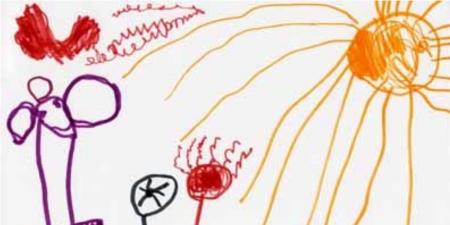Case
Rosa was overjoyed when she delivered her first son Alan at the hospital. He was going to be their first “true American” child, born and raised in the country she had sacrificed so much to get to. Her husband would soon be moving to the U.S. but was awaiting a work permit. On arrival home from the hospital, Alan’s older sisters were so excited that they fought over who would get to hold him first.
After his first week, however, Rosa noticed that Alan’s cry seemed to be weak and that he had trouble feeding. She reported this information to the pediatrician who quickly reassured her nothing was wrong. Rosa failed to be reassured and 2 weeks later sought consultation with another doctor when Alan’s breathing difficulty increased. The new pediatrician diagnosed respiratory syncytial virus (RSV), admitted Alan to the pediatric intensive care unit (PICU), and had him intubated. Rosa spent 4 nights in the disturbing world of beeps and flashing lights trying to understand the culture of this new environment and what the conversation she overheard meant. She was able to arrange for her daughters to stay at a neighbor’s apartment, fearing that the experience would be too much for them.
This scenario repeated itself several times over the next 3 months, and Alan was rehospitalized after unsuccessful brief stays at home. In her many efforts to understand what was wrong with her child, Rosa felt frustrated with the “doctor speak” she received. During this same time, Alan’s sisters became scared of taking care of their brother, fearing they would do something to worsen his condition. His younger sister began to quietly resent her brother for always absorbing Rosa’s attention. She made this apparent to the family one evening after Rosa refused to allow her to have a sleepover for fear that Alan would get another infection.
Rosa spent countless nights searching the Internet for explanations of what was wrong with her son. This situation came to a head one morning when Alan was in the hospital. An unfamiliar nurse arrived in his room seeking Rosa’s signature on consent forms for a tracheostomy and insertion of a gastric feeding tube. When Rosa questioned the necessity of these interventions, the nurse replied, “Oh, I thought the doctors told you your son has spinal muscular atrophy. They have to do these procedures to save him.” In a state of shock and confusion, Rosa signed the forms and cried.
Soon after the procedures, Alan was sent to a local children’s rehabilitation center on a ventilator. Initially Rosa wanted to take Alan home, but after seeing the “hole in his throat” she thought it would be too difficult for her daughters. Her relationship with the girls had become strained. They refused to talk about Alan or even visit him in the PICU. Rosa struggled to see her son and made excuses when she could not visit.
As the months dragged on, first into a year and then into 2, Rosa stopped visiting Alan. The nursing staff grew quite fond of him and brought him toys and clothing. He even began to communicate through the use of sign language and his smile always brought happiness to the staff. They tried to contact Rosa from time to time, to provide her updates, but she never returned their calls. Many nurses felt that Rosa had abandoned her son and often accused her of being a bad mom and not caring. Even the doctors began to debate whether Rosa should be contacted regarding medical decisions about Alan.
Commentary
When people hear the term “pediatric palliative care,” they often think of kids dying of cancer. In reality, palliative care is relevant to any life-limiting condition, including those that are nonprogressive yet severe enough to render the patient vulnerable to health complications [1]. Palliative care addresses not only symptoms, but also psychological, social, and spiritual problems, as well as advance care planning. Ideally such care is “offered at diagnosis and continued throughout the course of illness, whether the outcome ends in cure or death” [2]. Clearly the patient in this scenario and his family would have benefited greatly from the ongoing involvement of a pediatric palliative care team.
The diagnosis of spinal muscular atrophy (SMA) is typically made either through blood testing, electromyography, or nerve conduction studies [3], yet somehow Alan’s mother was not aware of the purpose of these tests. One wonders whether a language barrier played a role in this miscommunication, highlighting the need for interpreter services even when a parent may not explicitly request them. Parents whose native language is not English may be self-conscious or may not want to seem demanding by requesting assistance.
Alan’s mother was understandably surprised when an unfamiliar nurse arrived seeking her signature on a consent form for tracheostomy and gastrostomy tube placement. The description suggests that the nurse was more concerned with obtaining a signature on a piece of paper than engaging in a thoughtful process of providing clinical information and answering questions, underscoring the importance of shared decision making in obtaining parental permission [4]. This exchange also highlights the need to explore a parent’s current perceptions of her child’s illness to determine the most effective and compassionate method of conveying information [5]. Had the nurse begun the conversation by asking Rosa what she understood about Alan’s illness, the subsequent discussion would have been far more productive.
The nurse not only informed Rosa of her son’s diagnosis in an abrupt manner, she also gave Rosa only one option: “The doctors have to do these procedures to save [Alan].” At this point the involvement of a pediatric palliative care team is crucial. Assuming this is SMA Type I, it is likely that Alan has only months or, at most, a few years to live. Many parents would opt for tracheostomy and G-tube placement in order to have as much time with their child as possible. The goal of other parents, however, may be “to add life to the child’s years, not simply years to the child’s life” [6]. At the very least, this is an opportunity for Rosa to consider all the options and make a decision—ideally with the support and input of Alan’s father—that she feels is in her son’s best interests. This can only be accomplished in a safe and supportive environment, where the implications of her decision—as well as all relevant options—have been considered. Absent these, Rosa signs the consent form “in a state of shock and confusion.”
After initially being sent to a local rehabilitation hospital, Alan seems stable enough to return home, but his mother believes she would be unable to care for him, given her other responsibilities. Here, again, a transdisciplinary palliative care team [7] could provide support in a variety of areas, ranging from home nursing visits to care coordination to sibling support. Without these, it is easy to understand why Rosa has been so frightened of caring for her vulnerable child with a tracheostomy and G-tube in the midst of an unintelligible medical system. And clearly it is wrong to assume that her preference that Alan remain in the rehab facility signifies a lack of concern.
The same can be said for the infrequency of her visits. She has other children to tend to, and Alan seems to be receiving excellent care. On a more emotional level, Rosa may feel inadequate for not being able to provide Alan with what she believes he needs, and each visit may remind her of failed aspirations—as well as her evolving grief—as a mother. The medical staff’s protectiveness toward Alan is understandable, and certainly someone needs to be available to make decisions for him as his disease progresses. Yet for all the empathic concern and medical technology devoted to him, where is the support for his mother and sisters?
There are many points in this narrative where a pediatric palliative care team could have improved the outcome significantly: at diagnosis, at the decision point of tracheostomy and G-tube placement, and when Alan became stable enough to go home. Other questions loom: Will Alan be transferred back to the hospital when he decompensates? Will he receive aggressive resuscitation when his heart stops, and, ultimately, where, how, and in whose presence will he die?
This case highlights some of the particular challenges of pediatric palliative care. First, there is an understandable tendency toward a more aggressive treatment course in pediatric care than in the care of adults facing life-threatening illness. Second, the old saying “children are not little adults” highlights the critical differences—from the physiologic to the cognitive, emotional, recreational, and educational—between the age groups. Lastly, in place of the patient-physician dyad in adult medicine, pediatrics has the triad of patient-parent(s)-physician, not to mention the crucial role of siblings and classmates, and the need to coordinate care not only between home and hospital, but also school and possibly summer camp.
One of the reasons Alan did not receive the palliative care he desperately needed might have been that it was not available. Approximately 50,000 children die each year in the United States—and 10 times that many live with a chronic complex illness [1]—yet there are fewer than 100 board-certified pediatric palliative care physicians. Patients under the age of 25 make up only 0.4 percent of all hospice admissions [8], largely because the hospice benefit was designed with adults in mind and requires patients to forgo potentially curative treatment, forcing parents to choose between cure and care. The Institute of Medicine makes it clear: “We can and must reduce the number of [children] who fail to receive consistent, competent care that meets not only their physical needs but their emotional, spiritual, and cultural ones as well” [9].
Little Alan was one of those children. With palliative care from the time of diagnosis and throughout his life, he probably would have been able to go home to his mother and sisters. He would have had expert pain and symptom management, and his family would have had support from pastoral care, child life, and case management. And he would have been assured of living out his life in the company of those who cared for him most, thus achieving the ultimate goal of palliative (and, I would argue, all medical) care: “the best quality of life for patients and their families, consistent with their values, regardless of the location of the patient” [10].
References
- Himelstein BM, Hilden JM, Boldt AM, Weissman D. Pediatric palliative care. N Engl J Med. 2004;350(17):1752-1762.
-
American Academy of Pediatrics. Committee on Bioethics and Committee on Hospital Care. Palliative care for children. Pediatrics. 2000;106(2 Pt 1):352.
- Wang CH, Finkel RS, Bertini ES, et al. Participants of the International Conference on SMA Standard of Care. Consensus statement for standard of care in spinal muscular atrophy. J Child Neurol. 2007;22(8):1027-1049.
-
Informed consent, parental permission, and assent in pediatric practice. Committee on Bioethics, American Academy of Pediatrics. Pediatrics. 1995;95(2):314-317.
- Baile WF, Buckman R, Lenzi R, Glober G, Beale EA, Kudelka AP. SPIKES—A six-step protocol for delivering bad news: application to the patients with cancer. Oncologist. 2000;5(4):302-311.
-
American Academy of Pediatrics, 353.
- Hermsen MA, ten Have HA. Palliative care teams: effective through moral reflection. J Interprof Care. 2005;19(6):561-568.
-
National Hospice and Palliative Care Organization. NHPCO Facts and Figures: Hospice Care in America. 2009: 6. http://www.nhpco.org/files/public/Statistics_Research/NHPCO_facts_and_figures.pdf. Accessed May 24, 2010.
-
Field MJ, Behrman RE, eds. When Children Die: Improving Palliative and End-of-Life Care for Children and Their Families. Washington, DC: National Academies Press; 2003: xv.
-
American Academy of Pediatrics, 354.



